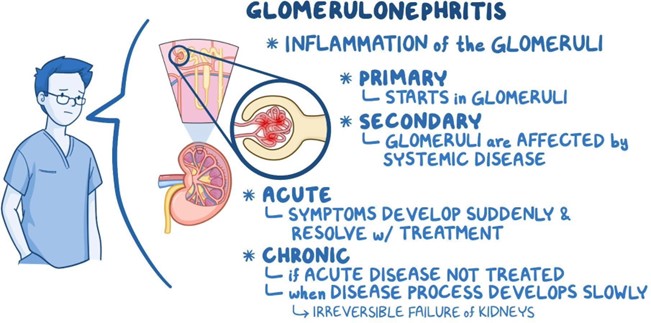A nurse is assisting with the admission of a child who has measles. Which of the following isolation precautions should the nurse initiate?
Contact
Airborne
Protective environment
Droplet
The Correct Answer is B
Choice A: Contact isolation is not appropriate for a child who has measles, which is a highly contagious viral infection that causes fever, rash, cough, runny nose, and red eyes. Contact isolation is used for patients who have infections that can be spread by direct or indirect contact with the patient or their environment, such as wound infections, scabies, or Clostridioides difficile. Contact isolation requires wearing gloves and gowns and using dedicated equipment.
Choice B: Airborne isolation is appropriate for a child who has measles, as it is used for patients who have infections that can be spread by small droplets that can remain suspended in the air and travel over long distances, such as tuberculosis, chickenpox, or measles. Airborne isolation requires wearing a respirator mask and placing the patient in a negative pressure room with the door closed.
Choice C: Protective environment isolation is not appropriate for a child who has measles, as it is used for patients who have compromised immune systems and are at high risk of acquiring infections from others, such as transplant recipients, cancer patients, or patients receiving immunosuppressive therapy. Protective environment isolation requires wearing gloves, gowns, masks, and eye protection and placing the patient in a positive pressure room with high-efficiency particulate air (HEPA) filters.
Choice D: Droplet isolation is not appropriate for a child who has measles, as it is used for patients who have infections that can be spread by large droplets that can travel up to 6 feet from the source, such as influenza, pertussis, or meningitis. Droplet isolation requires wearing a surgical mask and eye protection and placing the patient in a private room or cohorting with other patients with the same infection.
Nursing Test Bank
Naxlex Comprehensive Predictor Exams
Related Questions
Correct Answer is D
Explanation
Choice A: Placing the child on a no-salt-added diet is an important intervention for acute glomerulonephritis, as salt can increase fluid retention and blood pressure. However, this is not the priority action, as it does not address the immediate problem of fluid overload.
Choice B: Maintaining a saline lock is a useful measure for acute glomerulonephritis, as it allows for easy access to administer fluids or medications if needed. However, this is not the priority action, as it does not monitor the fluid status of the child.
Choice C: Educating the parents about potential complications is an essential part of nursing care for acute glomerulonephritis, as it can help them recognize signs of worsening conditions and seek timely medical attention. However, this is not the priority action, as it does not assess the current condition of the child.
Choice D: Checking the child's daily weight is the priority action for acute glomerulonephritis, as it is the most accurate indicator of fluid balance and kidney function. A sudden increase in weight can indicate fluid retention and edema, which can lead to heart failure or pulmonary edema. A decrease in weight can indicate dehydration or diuresis, which can lead to hypovolemia or electrolyte imbalance.

Correct Answer is A
Explanation
Choice A: This statement indicates an understanding of the teaching, as washing all recently used clothing, bedding, and towels in hot water can help eliminate lice and nits (eggs). Lice and nits can survive on fabrics for up to two days and can spread from one person to another through direct or indirect contact. Washing items in hot water can kill lice and nits by exposing them to high temperatures.
Choice B: This statement indicates a lack of understanding of the teaching, as nits will not always be present after treatment. Nits are tiny white or yellow oval-shaped eggs that are attached to the hair shaft near the scalp. Nits can hatch into nymphs (young lice) within seven to ten days and mature into adult lice within nine to twelve days. Nits can be removed by using a fine-toothed comb or by applying products that loosen their grip on the hair.
Choice C: This statement indicates a lack of understanding of the teaching, as treating all family members may not be necessary or effective. Treating all family members can expose them to unnecessary chemicals or medications that may have side effects or cause resistance. Treating all family members may also not prevent reinfestation if there are other sources of exposure such as school or daycare. Only family members who have evidence of lice or nits should be treated.
Choice D: This statement indicates a lack of understanding of the teaching, as throwing out toys that can't be dry cleaned or washed may not be required or practical. Throwing out toys can cause emotional distress or financial burden for the child or the parents. Throwing out toys may also not prevent reinfestation if there are other sources of exposure such as clothing or bedding. Toys that can't be dry cleaned or washed can be sealed in plastic bags for two weeks to suffocate the lice and nits.

Whether you are a student looking to ace your exams or a practicing nurse seeking to enhance your expertise , our nursing education contents will empower you with the confidence and competence to make a difference in the lives of patients and become a respected leader in the healthcare field.
Visit Naxlex, invest in your future and unlock endless possibilities with our unparalleled nursing education contents today
Report Wrong Answer on the Current Question
Do you disagree with the answer? If yes, what is your expected answer? Explain.
Kindly be descriptive with the issue you are facing.
